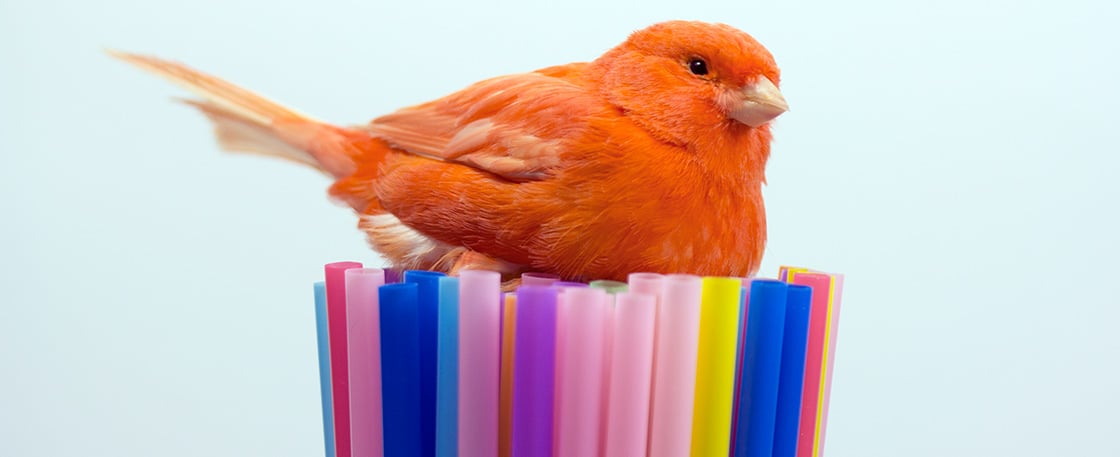When you think of a plastic straw, you probably imagine mouth- watering milkshakes, ice-cold sodas, and delicious smoothies. Americans use half a billion plastic straws every day—enough to wrap around the globe two-and-a-half times. Straws make drinking easier and neater. (And who doesn’t love that loud slurp at the end of a satisfying drink?)
But did you know that those skinny tubes of plastic are harming animals all around the world?
In the U.S. alone, people throw out 12 million pounds of plastic straws each year. These straws are so light that many blow right out of trash cans and garbage dumps. The wind carries them through the air, and billions are landing in rivers and oceans. Birds, fish, and other animals can mistake them for food or swallow them by accident.
Straws have been found stuck in a sea turtle’s nose and wedged in the stomachs of dead birds and dolphins. Some experts estimate that more than 1 million sea animals are killed each year by straws and other types of plastic trash. The crisis is so serious that many people are saying that plastic straws should be outlawed. Seattle is one of a growing number of cities that are planning to prohibit restaurants and coffee shops from handing out plastic straws.
When you think of a plastic straw, you probably think of thick milkshakes. Maybe you think of cold sodas or tasty smoothies. Americans use half a billion plastic straws every day. That’s enough to wrap around the globe two-and-a-half times. Straws make drinking easier and neater. (And who doesn’t love that loud slurp at the end of a drink?)
But did you know that those plastic straws are harming animals all around the world?
In the U.S., people throw out 12 million pounds of plastic straws each year. These straws are very light. Many blow right out of trash cans and garbage dumps. The wind carries them through the air. They land in rivers and oceans. Birds, fish, and other animals swallow them.
Straws have been found stuck in a sea turtle’s nose. They’ve been found in the stomachs of dead birds and dolphins. Some experts say that more than 1 million sea animals are killed each year by straws and other plastic trash. That’s why many people are saying that plastic straws should be banned. In Seattle, it will soon be against the law for restaurants to hand out plastic straws. Other cities have the same plan.
Cuando piensas en las pajillas de plástico, puede que se te haga la boca agua imaginando batidos de helado, refrescos fríos y deliciosos licuados de frutas. Los estadounidenses utilizan alrededor de 500,000 pajillas de plástico al día, las suficientes para envolver el globo dos veces y media. Las pajillas facilitan y hacen más limpio el acto de beber. (¿Y a quién no le encanta hacer ese estruendoso sorbido al final de una rica bebida?).
Sin embargo, ¿sabías que esos finitos tubos de plástico lastiman a los animales alrededor del mundo?
En EE.UU. solamente, la gente tira a la basura 12 millones de libras de pajillas de plástico al año. Estas pajillas son tan ligeras que muchas salen volando de los cubos de basura o los vertederos de basura. El viento las lleva por el aire y miles de millones terminan en los ríos y los mares. Las aves, los peces y otros animales las confunden por comida o las tragan por error.
Se han encontrado pajillas atoradas en las narices de las tortugas marinas e incrustadas en los estómagos de aves y delfines muertos. Algunos expertos estiman que más de 1 millón de animales marinos mueren al año a causa de las pajillas y demás basura plástica. La crisis es tan seria que mucha gente dice que las pajillas de plástico deberían ser prohibidas. Seattle es una del creciente número de ciudades que planean prohibir que los restaurantes y cafeterías ofrezcan pajillas de plástico.

